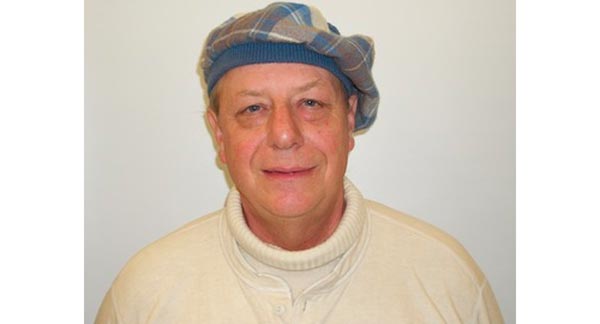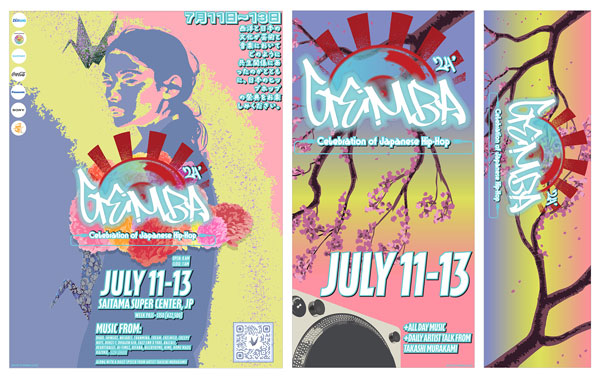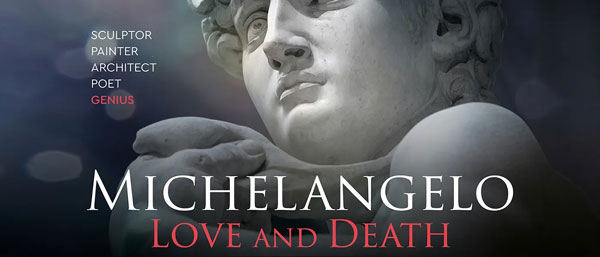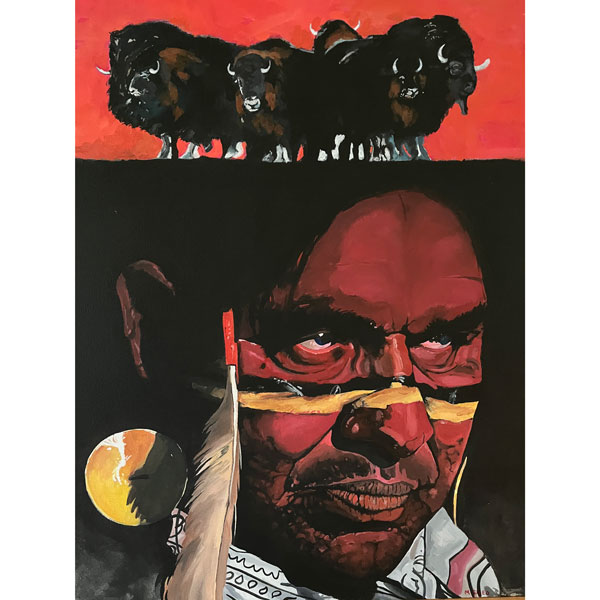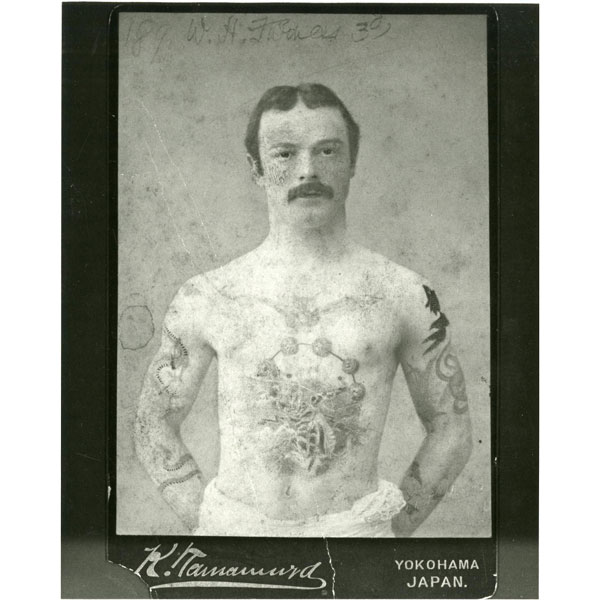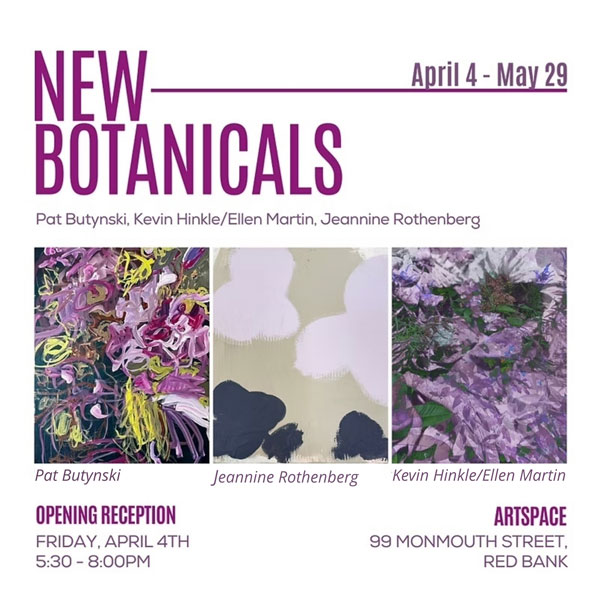By Rachel Alban, JerseyArts.com
originally published: 05/25/2021
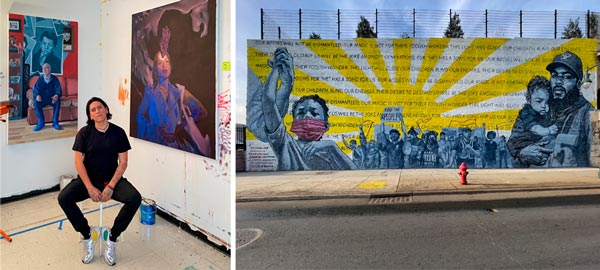
Layqa Nuna Yawar is an artist based in Newark, NJ, known internationally for his large-scale, community-based murals. His work often centers the complex narratives of BIPOC communities throughout the world. We recently visited Layqua in his studio to hear the tale of this multidisciplinary storyteller.
Tell me about the beginnings of your relationship with visual art and your journey as an artist.
I was born in Equador, and immigrated to the United States when I was 14. In high school, I was always drawing, but I planned to study psychology. Then, I took an art class my senior year, and realized this was something I could do.
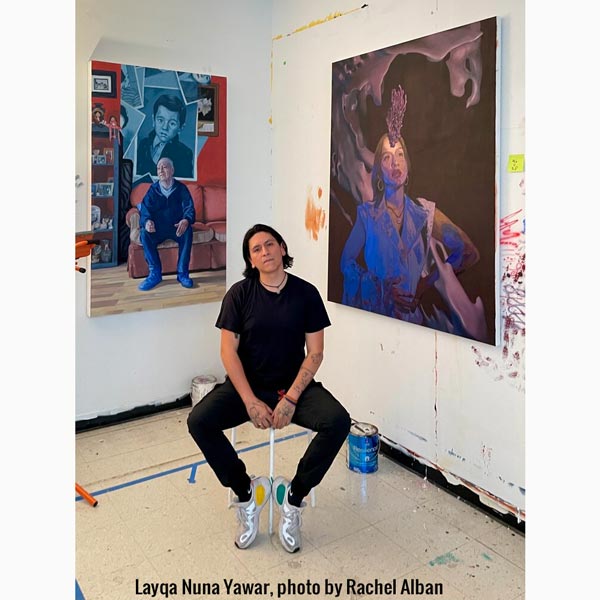
I went to art school. There, I began to see art as “professional practice,” but I didn’t see myself in the Chelsea gallery setting and didn’t know a way to get around that. After graduation, I actually stopped making art for a few years.
Eventually, I started learning video editing, photography, and coding. The concept of collaborative coding was especially exciting to me. I learned that the early internet was created by people collaborating across the world, to create something good - which to me was a beautiful metaphor.
That collaborative culture was also what I found in street art. Learning all the science led me to create art in the street. It was a trajectory.
I moved to South Korea for a time, and I started drawing again. I made portraits of friends. I visited Japan and made life sized portraits of people and started pasting them to walls.
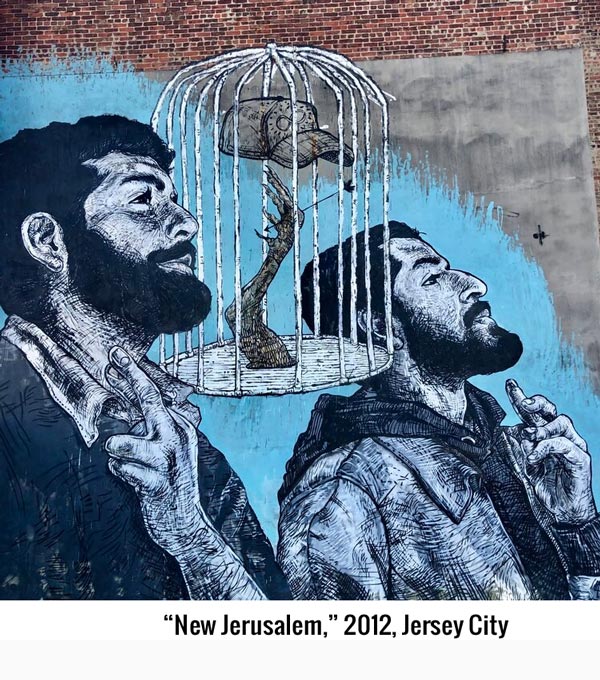
What is your thought process when making your art?
I like telling people’s stories through my art. Painting portraits, I am telling their story and at the same time, telling my story. I’m doing it to give back in a way, but there is also a selfish part of it. The process of painting, and of making art, is what gives me life. I think that’s the same for a lot of artists.
How does your process differ when you are making portraits on the streets?
Making portraits in a public space is unique. I believe in the freedom of artists to create, and the power of that freedom, but also that there is a responsibility when you are creating in the public space that the art needs to be respectful and meaningful for the community. Portraits in public spaces say a lot, and I really enjoy that.
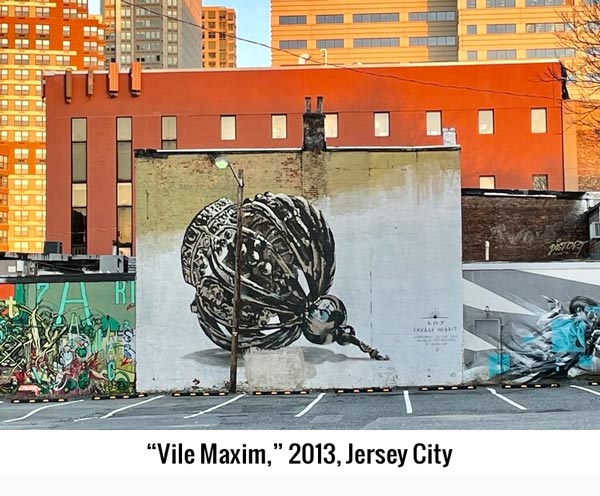
How would you describe your creative process?
Collaborative. Most of the big murals and the large public art projects I’ve been doing are collaborative, but the collaborative process has changed over time. In the past, it might have been me and another artist talking about a piece and making it. Now, I am trying create collaboration between artists and community.
It’s no longer about two artists collaborating on one piece of art. It’s now about me being a facilitator for collaboration where a number of people can feel heard and seen. It’s important to me that the end result has been in conversation with the community, and the whole process makes it so that we already have that agreement.
What is the relationship between your studio practice and your work on the street?
It is a cyclical process between the studio practice and the street. I can experiment in my studio, and explore ideas. Then I look at the work and consider where can I make that in a public space? I can think about the size and scale and play with that.
For example, I can do a smaller drawing and then scale up in a mural. There’s a beauty and a power to being outside and seen, but there is also a beauty in having a studio place to come and paint. I’m lucky I haven’t had to pick.
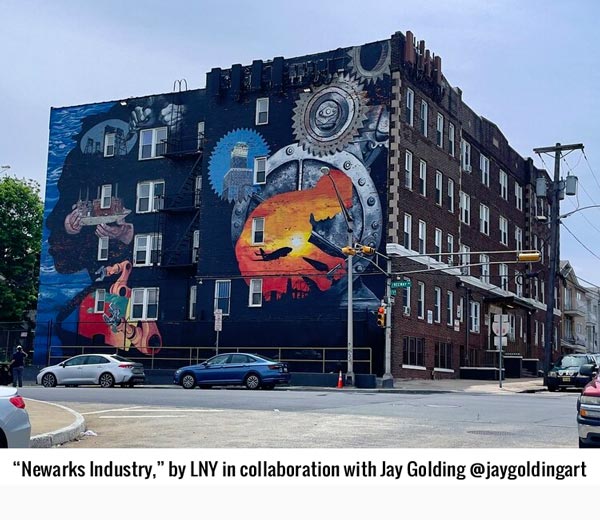
What life experiences inspired your work? How has your work helped you process your emotions?
I used to be constantly traveling, almost nomadic. In a way, I think all the traveling was a reaction to my own immigrant trauma. I think the traveling was sometimes a way of running away from my fear. But I gained a lot of perspective from traveling and it’s definitely influenced my art.
What brought you to Newark?
I went to Rutgers Newark, and then to Rutgers New Brunswick. After college, I travelled, spent a brief time in Manhattan, then moved back to Newark about eight years ago. I was attracted to the community and the possibility. I saw this interesting community of artists.
How has it been working in the Newark art scene?
It’s interesting to be here in Newark, living in the middle of the story as it’s being told. It’s encouraging and lovely to see friends doing well. I can look out my studio window and see Queen Latifah shooting a TV show, and all of the new murals coming up. I can look out my window and see one of the murals I painted too. Our mayor and administration appreciates art.
I do have to be critical and thoughtful about what I am doing as an artist, because all this progress is leading to gentrification. But as an artist, I also get to have a voice in that conversation and use public art to effect that change.
Where would you suggest Jersey Arts readers visit your murals in Newark?
“This Guiding Light,” located on Rt 21 between Edison Place and Lafayette. This is my most recent mural, made in 2020 in collaboration with photographer Chrystofer Davis (@dolo_foto) and poet Jasmine Mans (@poetjasminemans).
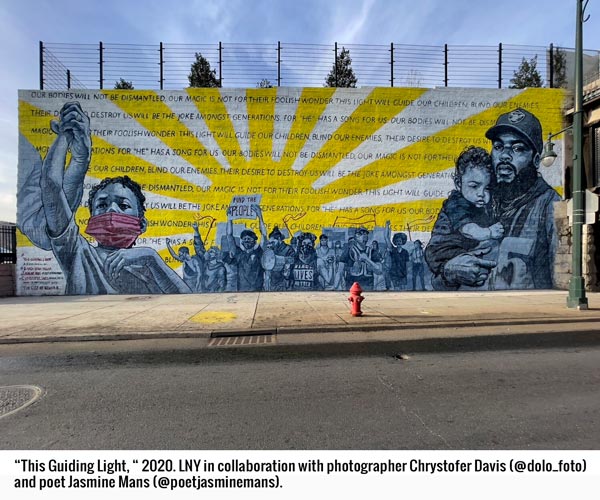
“Magnitude and Bond,” a collaborative mural by A Womb of Violet Collective (@awombofviolet) Kelley Prevard (@prevardk), and myself for @fourcornerspublicarts, located at Halsey St, between Market and Branford St.
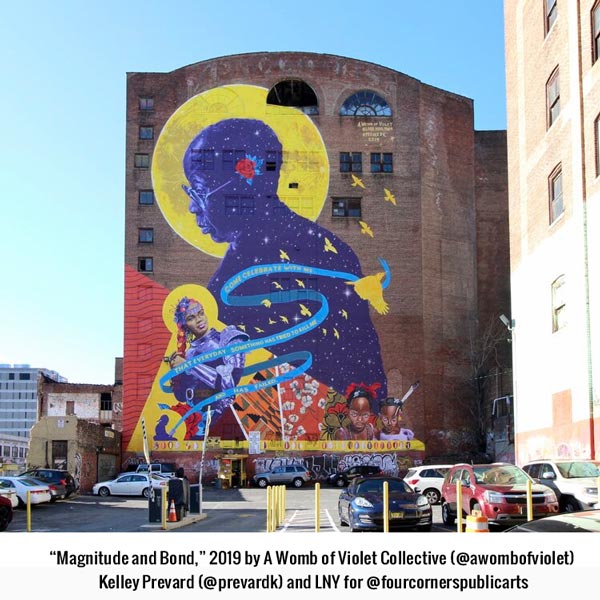
Tell us about a memorable moment working on a NJ mural.
In Jersey City, I painted a mural on Coles and 4th of two friends, and down the street I painted a crown. I made these back in 2012-2013, painting with a brush and a big stick (an extension pole). I love them because I was working a factory job at the time, and would leave each night to work on the murals.
How has the pandemic affected your art, and your life?
Working collaboratively was out. Teaching jobs and projects were canceled, I felt financial insecurity. After the initial shock, I wondered, “How do I fit into this new world?” Asking questions and not going out of the house pushed me to find new outlets. I started experimenting with digital art, the virtual reality world, and 3D technology.
I also found ways to use my artwork and skills in service of others. I ended up working with organizations here in Newark, including the Ironbound Community Corporation. I created fliers for their activism, events, and campaigns. I think the pandemic brought me closer to Newark, and to the community and organizations.
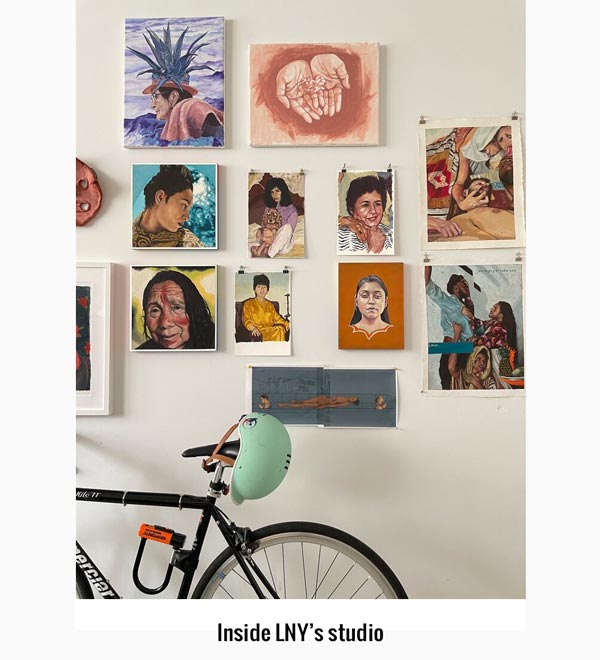
It was beautiful to see the statue of Christopher Columbus taken down in Washington Park. Now, I am on the jury panel that is reviewing artists’ proposals to replace the statue with another public art work. Being a part of that conversation feels great, and it wouldn’t have happened without the pandemic and everything that went down.
What advice might you give to an artist who is early in their career?
It’s important to give yourself space to be brave and take the risk. Believe that you can create, even if society doesn’t seem to appreciate it at first. It’s important to make art not because we artists are special. It’s humanity that needs to be expressed and we all have those voices.
What’s coming up that you are excited or hopeful about?
There’s a project for ImVisible (@imvisible.nwk) that I am very excited about. This is a collaboration with Yeimy Gamez Castillo (@daliyama), and Four Corners Public Arts.
We did workshops with immigrant and refugee families. In the workshops, we conceptualized a permanent mural that we will paint in the spring, as part of Four Corners Public Art phase 2. And, we are making posters that will be handed out for free this summer in Newark.
For more about Layqa Nuna Yawar, visit his website or follow him on Instagram.
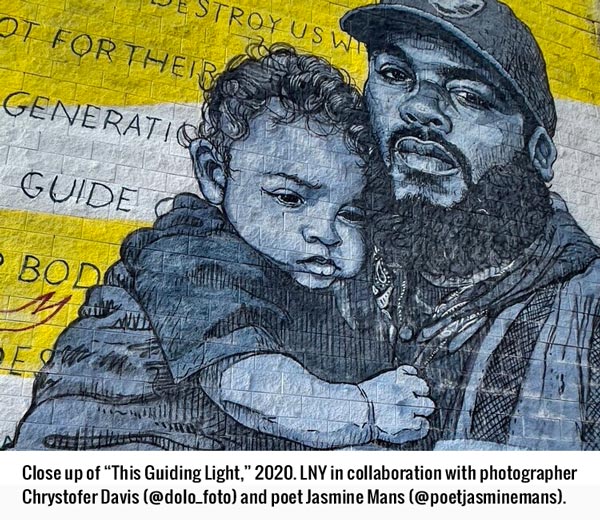
About the author: Rachel Fawn Alban is an arts educator, writer, and photographer based in Newark, NJ. Since 2013, she has been covering arts and culture stories for UntappedCities.com, StreetArtNYC.org, and ArtBreakout.org, and was a contributing photographer to Google Arts and Culture’s online 5Pointz exhibition. As an arts educator, Rachel develops and leads art workshops for organizations including Rutgers University's Paul Robeson Galleries, Abrons Art Center, and Scholastic’s Alliance for Young Artist and Writers, and is on Arts Ed Newark’s Trauma Informed Team. Rachel earned her BFA in Art Education and MPS in Art Therapy at the School of Visual Arts. Rachel is thrilled to now be focusing on the arts in New Jersey!
Content provided by
Discover Jersey Arts, a project of the ArtPride New Jersey Foundation and New Jersey State Council on the Arts.
FEATURED EVENTS
To narrow results by date range, categories,
or region of New Jersey
click here for our advanced search.
















